CES 2024 Preview: Four Themes to Watch For!
Jan 9, 2024
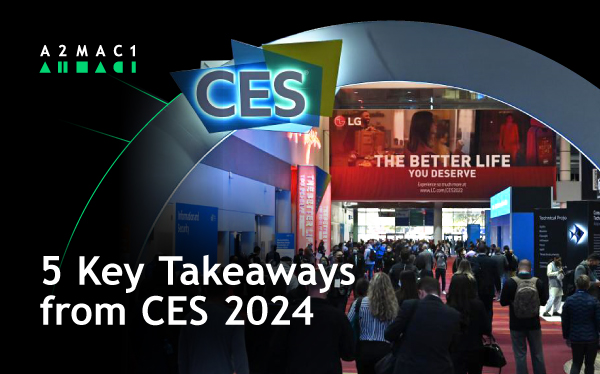
2023 was not the year that the mobility industry’s promises—delayed by the COVID crisis—materialized as expected. In the US, the adoption of electric vehicles has slowed down and still lacks the non-Tesla diversity of offerings needed to attract consumers. On top of that, the development of autonomous driving faced setbacks. GM’s Cruise suspended its robotaxi operations nationwide, laying off a quarter of its workforce, and Tesla’s “Full Self-Driving” solution has faced regulatory scrutiny and is yet to be resolved. Finally, the industry continued to face supply chain challenges.
Yet, CES has still been the special moment that kicks the year off with excitement and optimism about technology’s ability to transform the world. The 2024 show was no exception. Our on-site team collected the best that the show had to offer, including solutions to the issues we know the industry is wrestling with: compelling user experience, purposeful innovation, and sustainable design. The bottom-line: CES 2024 was a success and the audience has been enthusiastic regarding what was presented last week.
In this article, we’ll dive into the five takeaways you need to learn about the announcements made during CES 2024.
Takeaway #1: Artificial intelligence is everywhere…including automotive
The hype of artificial intelligence (AI) is real, but the CES 2024 announcements of upcoming implementations are mostly elevating existing use cases. Here are four examples of such use cases:
1 . Assistants and voice recognition: The integration of ChatGPT by Volkswagen and its partner Cerence take in-cabin assistants to the next level by enabling more natural conversations. Similarly, Mercedes-Benz’s home-grown MBUX virtual assistant employs generative AI for complex and human-like interactions. MBUX promises accurate and credible answers, as well as consistency across platforms such as in-cabin voice assistant, companion app, and social media. Furthermore, the system is designed for continuous updates, tailored adjustments for each car model, and consideration of the specific state of the car (e.g., whether in–motion or parked).
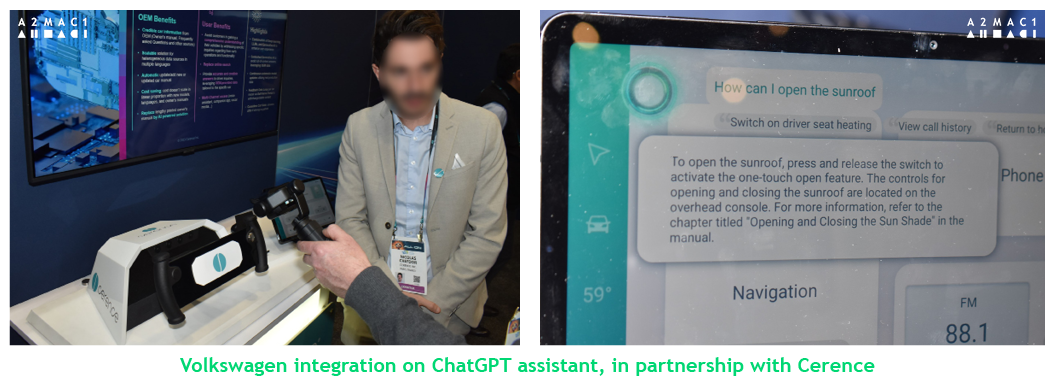
2 . Performance: InfiRay, a Chinese infrared thermal imaging company, showcased its Auto Night Vision System blending AI algorithms with thermal imaging. This system enhances visibility to enable the detection of pedestrians and vehicles even in challenging driving conditions, such as rain and fog, and at distances of up to 200 meters.
3. Quality: The Korean company, MONA, introduced its solution for battery diagnostics. It collects and analyzes data from cells, modules and the battery pack combining electrochemical impedance spectroscopy (EIS) and an AI-based diagnostic model. The goal is to prevent fires in electric vehicles, enhancing both the quality and safety of battery systems.
4 . Safety: Utilizing gaming technology, Sony simulated driving environment, traffic and diverse weather conditions to train the AI-based ADAS suite of its upcoming sedan, Afeela.
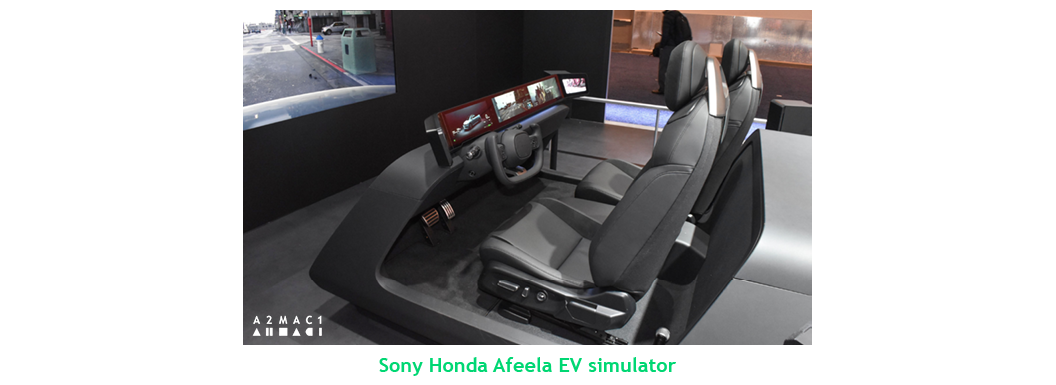
Takeaway #2: The automotive digital experience continues to evolve
Digital experiences span across consumer goods and mobility, with CES consistently serving as the stage for showcasing this convergence. Over the years, we have observed instrument clusters, central infotainment systems and roof-mounted screens growing in size and value. While Chinese brands are now prime examples of these innovations, American and European automakers, such as Tesla and Mercedes, paved the way for digital-first human-machine interface (HMI) and pillar-to-pillar screens.
In 2020, Audi demonstrated its “Display on demand – transparent” and mixed reality head-up displays. This technology is maturing in front of our eyes and could displace current solutions. Indeed, the quality and sharpness of the microLED-based technology featured by Mobis, Continental, and Samsung were nothing short from astonishing.
If deployed in instrument panels or directly in the car windshield in the future, they could declutter the cabin further from large floating screens and simplify the best-so-far “shy tech” display, mechanically concealed in the instrument panel. Another announcement worth noting was HiSensen’s in-vehicle laser projectors which will transform side and rear windows into immersive screens.
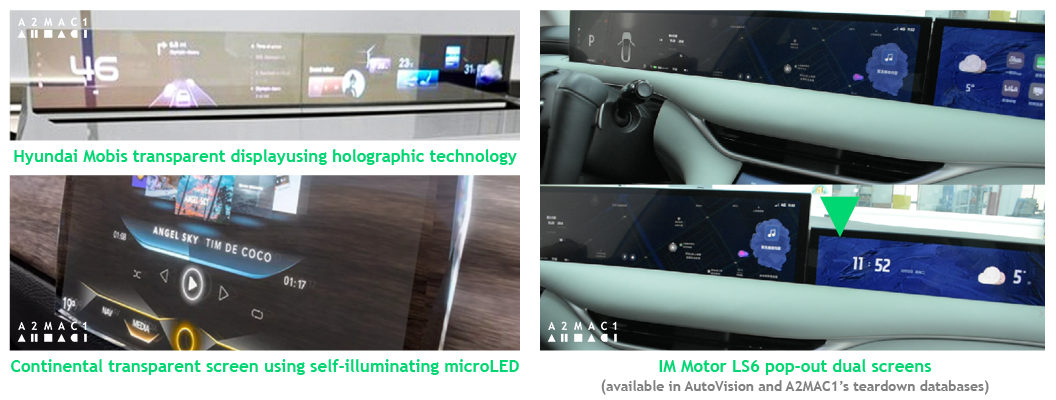
The evolution of the digital experience also extends to the exterior of the car. Already today, the front & rear lighting modules choregraph sophisticated animations to welcome driver and passengers into cars. A shift occurred in the past two years. In the words of our partner, DVN, exterior lighting now focuses on signaling. giving rise to the acronym ISD, which stands for Intelligent Social Displays. Through ISD, a car can communicate its autonomous mode, charging state, and the driver’s intent to pedestrians and fellow road users. The examples we observed in the past shows are now vastly surpassed in quality and richness by the technology demonstrated by AUO, Marelli, Plastic Omnium and others.
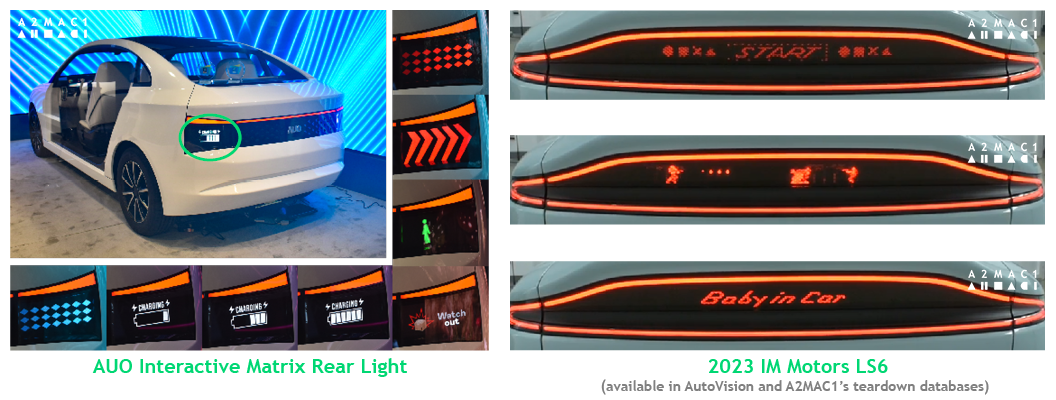
Takeaway #3: Autonomy may happen…but, in baby steps
At the end of 2010, there were promises of widespread adoption of autonomous driving capabilities. Fast forward to 2024, manufacturers are now pursuing incremental steps in Level 3 autonomy, recognizing the need for gradual advances in consumer expectations and regulations.
Aeva, Leddartech, Ommatidia, Lumentum, and others demonstrated their LiDAR technology, but it was Valeo and its SCALA 3 that captured our attention. A2MAC1 first analyzed the first generation of Scala in the 2018 Audi A8. The third generation, SCALA 3, now shows significant improvement range, point cloud data, accuracy, horizontal and vertical fields of vision.
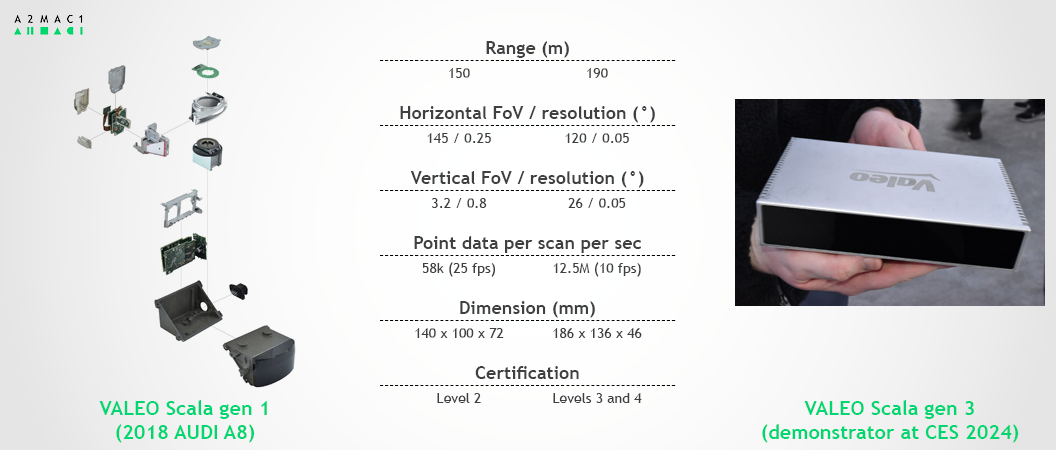
Finally, there were also announcements around the advancement of hardware and software compute platforms. For instance, Innoviz was named as a CES 2024 Innovation Awards Honoree for its InnovizCore AI Compute Module, an advanced automotive-grade hardware and software compute platform designed for Level 2+ through Level 5 autonomous vehicles.
Takeaway #4: The race to electrification continues
Let’s move away from specific technologies and discuss complete vehicles. A significant step has been taken by Honda towards electromobility, as the incumbent manufacturer’s commitment to achieving a “zero environmental impact” materializes into vehicles built from the ground up. In contrast to the soon-to-be discontinued Honda e and the conventional e:NP1 A2MAC1 analyzed in recent years, Saloon and Space-Hub are disruptive in both styling and packaging. We will pay specific attention to the lightweight character of the production vehicles the OEM will launch in 2025—a major challenge to the electric and sporty DNA of the brand. Moreover, the OEM announced enticing charging performance (“from 15 to 80% shortened to about 10-15 minutes”) surpassing the current benchmark. However, it did not specify the battery energy, chemistry, cooling, and charging strategy, which A2MAC1 has demonstrated are critical for cost competitiveness.
One final note on sustainability: although a pervasive theme across most presentations and showcased technologies, it predominantly materialized in two ways at CES 2024, electrification and recycling. Our previous mention of electric vehicles revealed during CES highlights the intersection of electromobility and sustainability. A2MAC1’s lifecycle assessments focusing on the European and Chinese markets offer insights into the necessary conditions to enable this intersection.
As for recycling, material suppliers like Constellium emphasized the infinite recyclability of aluminum, a lightweight, durable material prevalent in car manufacturing. Samsung underlined that recycled plastic covered “14% of the total plastic used in their products in 2022.” Forvia’s Materi’act presented its expertise in formulating and processing recycled and bio-sourced materials for an “85% CO2 reduction versus current materials.”
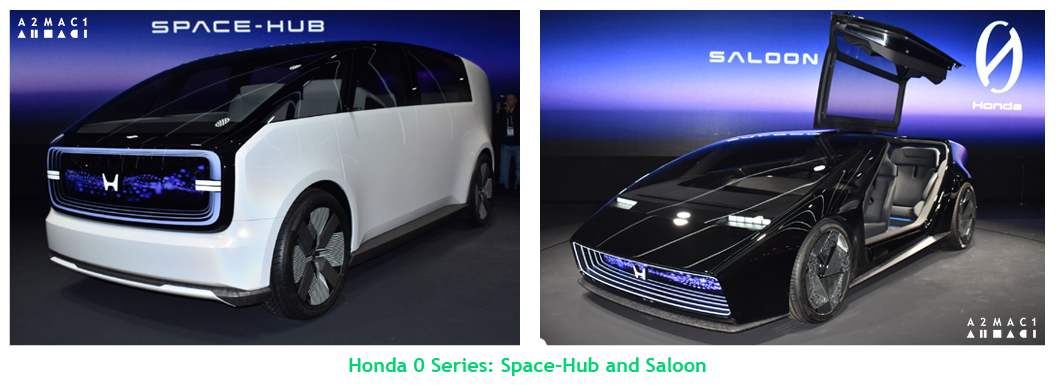
Takeaway #5: New year, new markets – emerging OEMs target US and Europe
In the US, we initially encountered VinFast vehicles at the Los Angeles Auto Show in 2021. Since then, the Vietnamese manufacturer has confirmed its ambitions for the US market and unveiled two models this year:
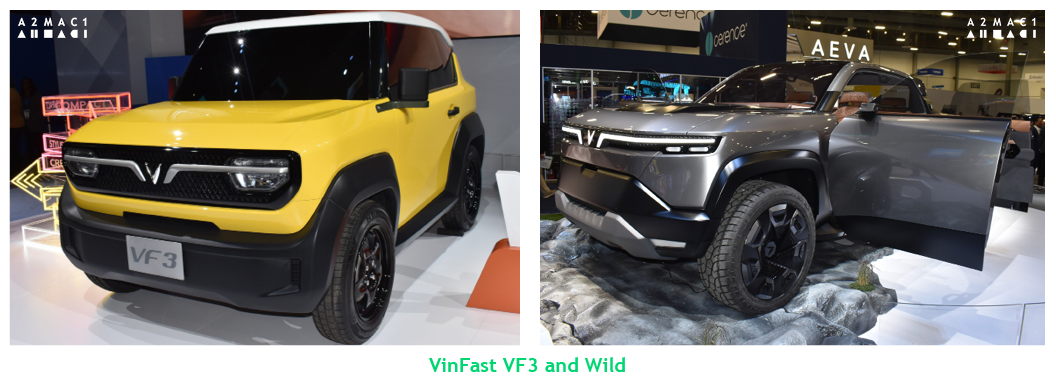
TOGG, a Turkish automotive manufacturer of electric cars, also announced a new vehicle. The T10F, the second car in TOGG’s lineup after their T10X SUV, will presumably targeting the European market.
And that’s it! In case you need a quick recap, here are the five takeaways you need to remember from CES 2024 if you’re in the automotive industry:
1 . Artificial intelligence is everywhere…including automotive
2 . The automotive digital experience continues to evolve
3 . Autonomy may happen…but, in baby steps
4 . The race to electrification continues
5 . New year, new markets — emerging OEMs target US and Europe
As it has in years past, CES 2024 featured valuable technologies shaping the future of the automotive industry on a global scale. Want to learn more and equip your team with the latest trends in mobility? Explore the event’s highlights with AutoVision’s comprehensive report, photo and video coverage.
Don’t currently subscribe to AutoVision? Contact us for the comprehensive report!